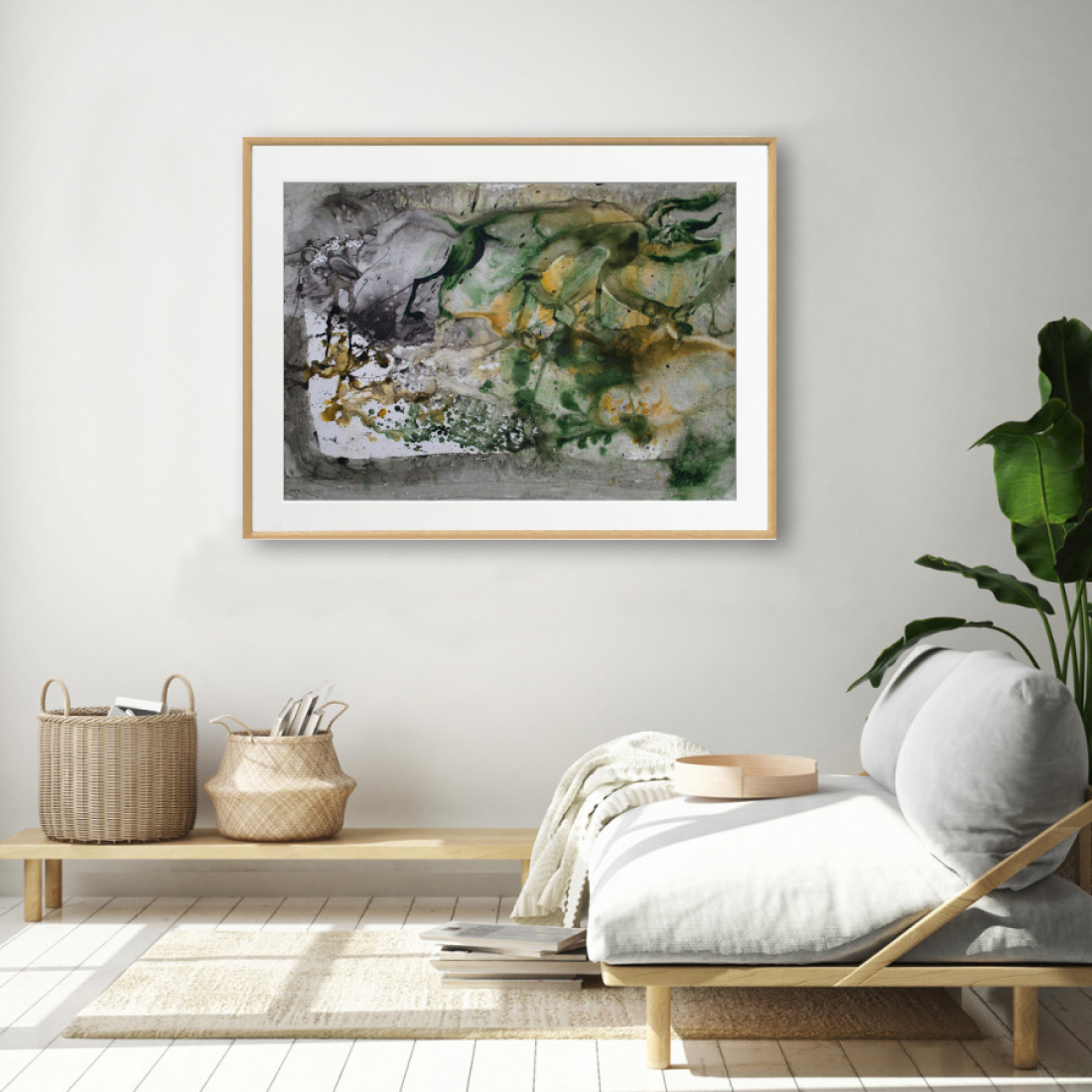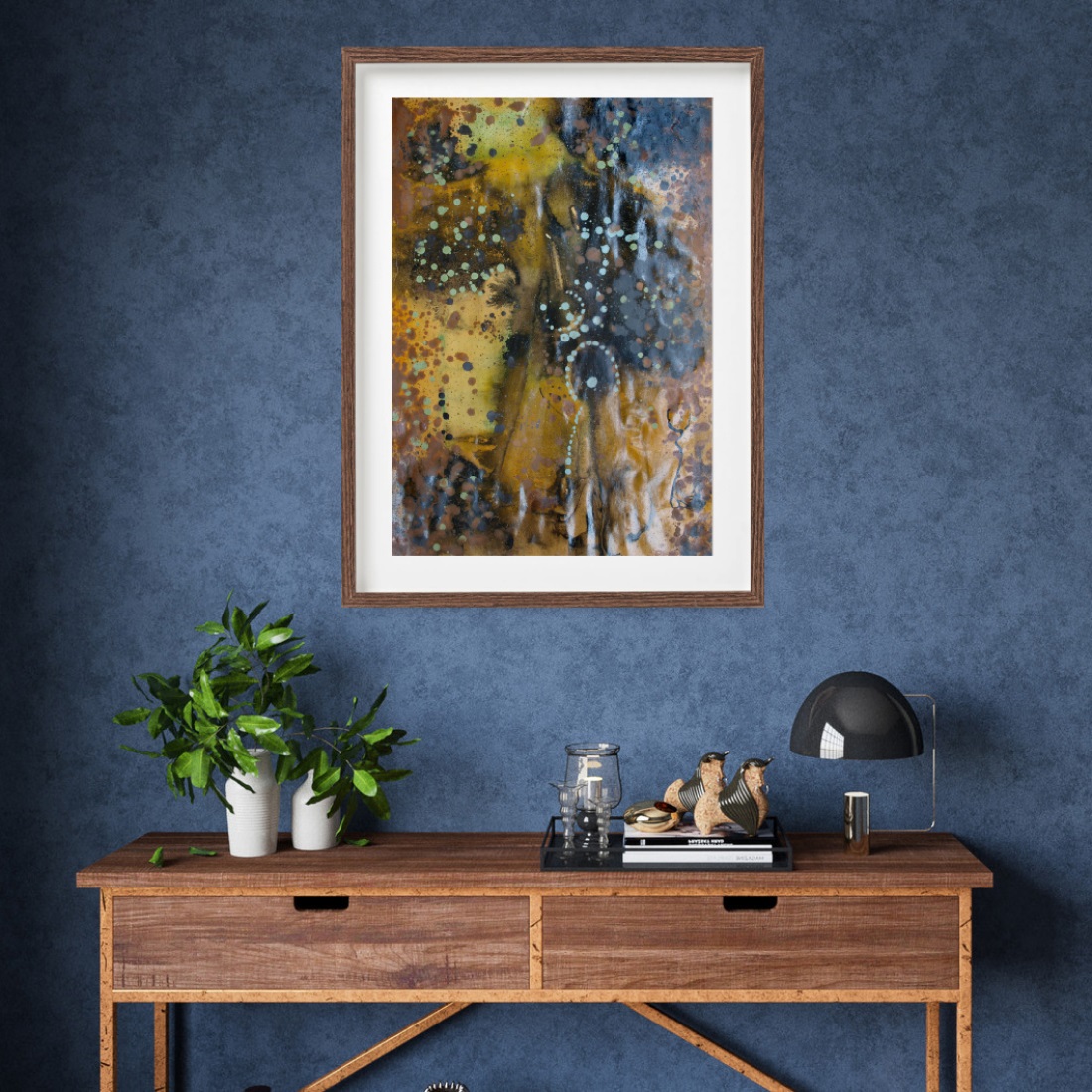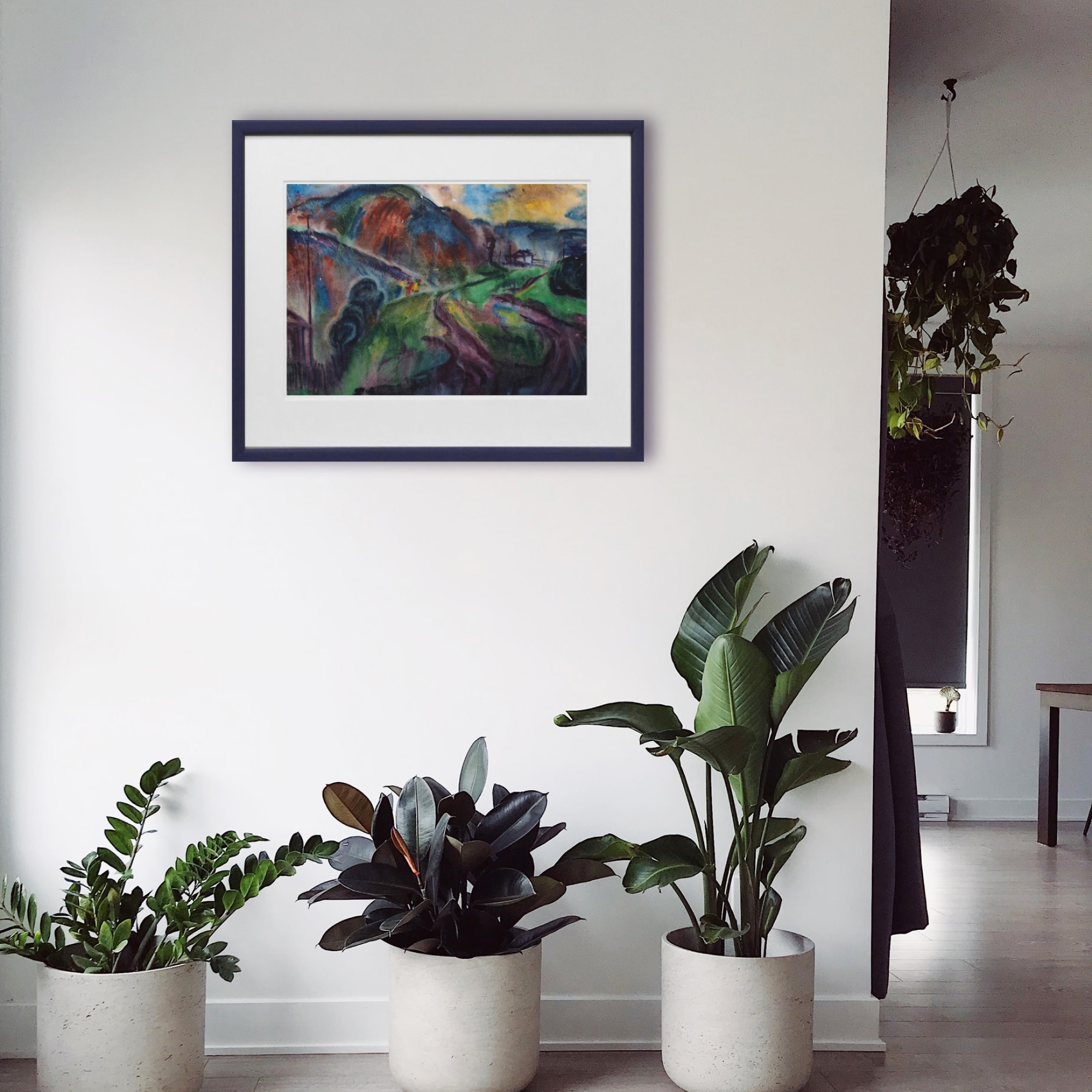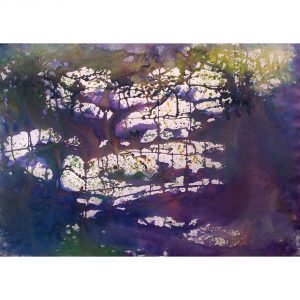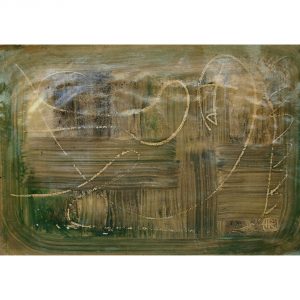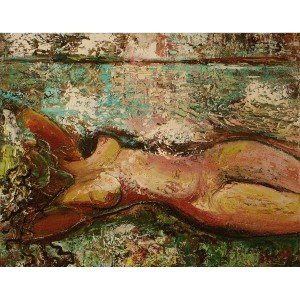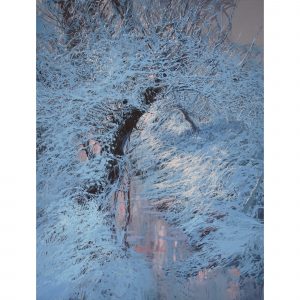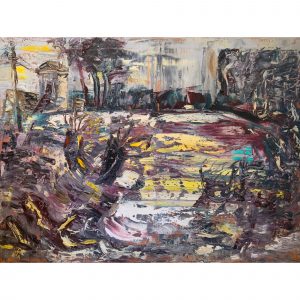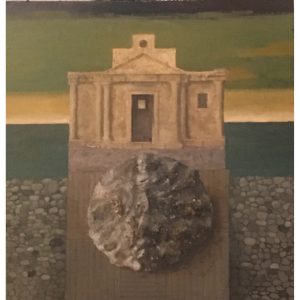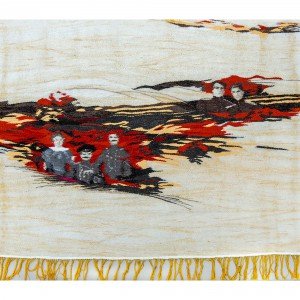Undervalued Art of Watercolor
Among the majority of collectors and art lovers, oil painting is the most in demand. Watercolors are not so popular, but they are no less important. Their cost is significantly lower, but this does not mean that the creation of such paintings takes less time and effort.
Works made in watercolor technique were painted by many famous artists. One of the first Russian watercolourists was Alexander Bryullov. The artist Ivan Bilibin, illustrator Leon Bakst and abstractionist Vasily Kandinsky as well created their own watercolour paintings.
Today watercolours return their legal right to stand on the same step with oil painting. With the easy hand of many world and Russian designers they have become not only a popular object in interiors, but also a favorite kind of painting in private collections.
One of the most difficult techniques in painting
Watercolour is a special painting technique, which uses water-based paints. When creating a drawing it is water that dissolves the colors and creates hundreds of complex colors that are different from each other. Thanks to such a variety of palettes artists get unique works.
The technique of watercolor is considered to be one of the most complex in painting. Layers of paints diluted with water, which the artist imposes dry out very quickly, so it becomes almost impossible to correct any errors.
Over time, watercolors began to form their own techniques. For example, in the middle of XIX century Russian portraitist Alexander Bryullov worked in the technique of air watercolor. After 50 years, the legendary artist Leon Baxt chose watercolor over oil paintings. In this technique he drew not only sets for performances and sketches for costumes for ballet performances, but also painted portraits of famous people of the era: Alexander Benoit, Walter Nouvel, Andrei Bely.
Watercolour also attracted many abstractionist artists. “The first abstract watercolor” was painted in 1910 by Vasily Kandinsky. The same work was the very first abstract work of the master, after which he called objectivity the main principle of his work.
Watercolor was in demand not only among people of art, but also among people of related professions. Until today, more than 40 watercolors of the writer Mikhail Lermontov, who painted them since early childhood have been preserved. One of the popular women artists in watercolor was the Grand Duchess of the House of Romanov – Olga Alexandrovna. She painted them for sale to support her family in emigration. Today some of her works can be found in the exposition of the Moscow Kremlin Museums. Children of Emperor Nicholas II were also involved in watercolor painting. They mostly wrote romantic landscapes and flowers.
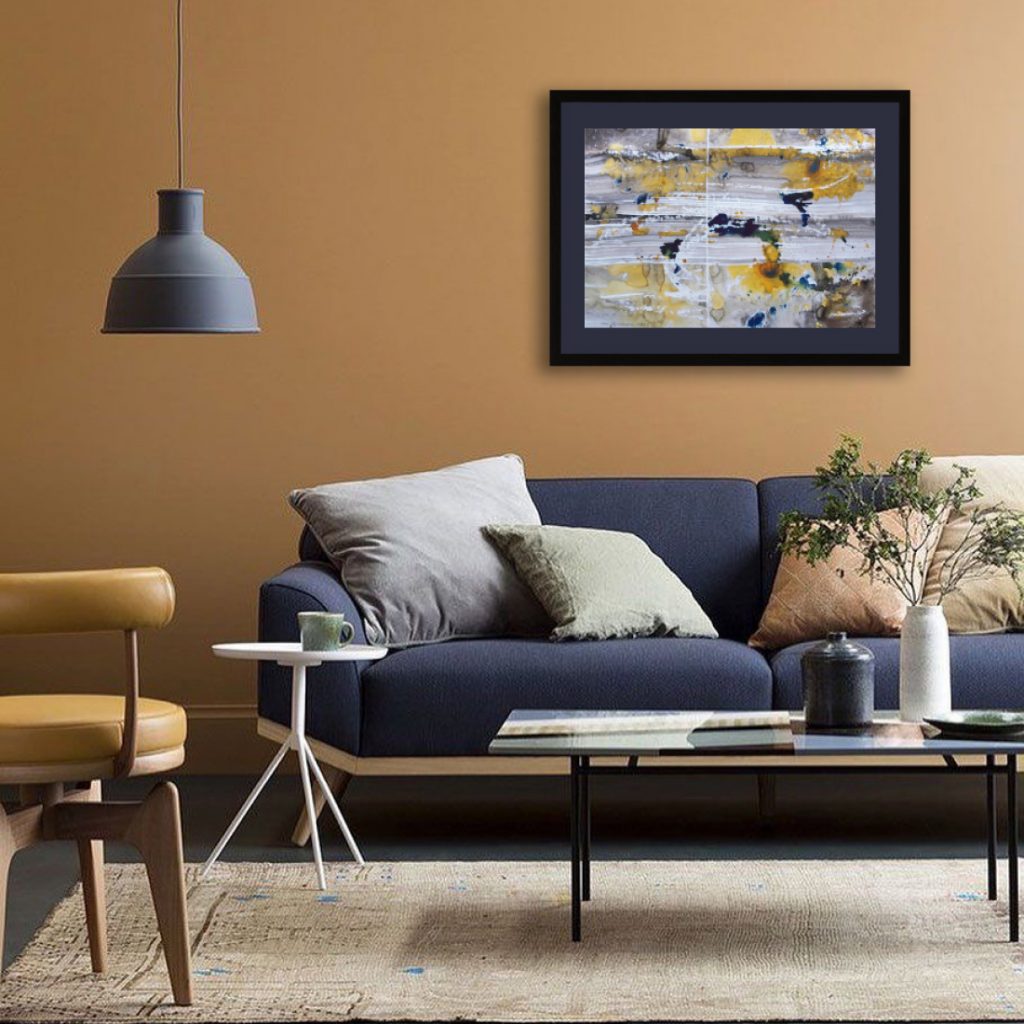
Composition number 12, Nikolai Kulebakin. Paper, watercolor. 2003
Watercolor in the interior
A watercolour is an affordable opportunity to give your interior uniqueness and originality. Gradation of shades as well as soft and unobtrusive color transitions in such paintings create the effect of lightness and coziness. However, watercolor works require special design. They must be placed on the mat and under glass, as they are heavily influenced by direct sunlight. For this purpose one can use special museum glass, which does not create glare. Natural glass not only protects watercolour from burning out, but also gives it a complete, elitist look.
Lately, watercolors are often added to the interior not only as paintings, but also as watercolor prints, which can be used for curtains, pillows, blankets and other textiles. It is not only an excellent solution for English and Provence style rooms, but also for houses that are furnished in a modern Contemporary style.
The variety of watercolor decor for home depends on the style of the drawing itself, its shape and palette of shades. If a watercolour repeats a couple or three colors that are already in the interior, it is a sure sign of appropriateness and good taste. Watercolour patterns can be differently adapted to the peculiarities of the room space. For this they can be combined with other textures, prints and even plants.
Affordable paintings for home: Nikolai Kulebakin’s watercolors
Many people think that watercolor is a chamber type of painting, but it is not always the case. There are different types of painting, some of them, for example, are created on wide format paper sheets. In addition to traditional genres, such as still life and landscape, watercolor has a fairly developed focus on abstraction.
One of the brightest followers in the style of abstract writing is the artist Nikolai Kulebakin. He has been working in this technique for more than 50 years, for which art researchers deservedly named him heir to the traditions of abstract expressionism in painting. In his works, Kulebakin is masterfully familiar with composition and color. Unusual forms in his drawings give birth to new vital energy, as in early watercolour landscapes in the style of expressionism “Windy Day” and “After the Thunderstorm” in 1976.
Nikolai Kulebakin is one of the few domestic artists who have no direct narrative about the landscape, his works are always allegorical. Kulebakin’s watercolor is not decorative landscapes, but paintings that make people think, inspire, immerse in their thoughts and talk about eternal values. In his abstractions and plot paintings he uses complex color combinations. Thanks to the technique of wet watercolour, which is also called English technique, it is possible to get bizarre forms that make one want to constantly observe. In them, everyone notices different details, reminiscent of the iris of the eye, or the autumn leaf or the seashore.
Nikolay Kulebakin expresses his creative individuality using the means of non-objective art. With the help of abstract forms in his paintings he conveys various human emotions – from happiness and joy to anger and contempt. This can be seen in the watercolors of 1993 “Father’s House, Series Eternity” and “Print, Series Eternity. Triptych, left side”, as well as in the works of 1996 “Three mountains”, “Trees in the swamp”, “Leshy” and “Meeting”, united by a mystical theme.
When creating his paintings, Nikolai Kulebakin mainly works with the technique of wet watercolor, but he also often paints in mixed technique, which resorts to the use of gouache, ink and coal, such as in the 2000 painting “Meeting in Space“, “Mosaic” and “Rock”. They also show a combination of several watercolour techniques: smooth transitions, splashes and different fading.
Nikolai Kulebakin’s watercolours are primarily interior. Among them there is also a series of works in the nude style, made in mixed technique with the addition of ink and sanguine: “Rest”, “Moonlight Night” and others. Thanks to the pigment sanguine perfectly conveys the tones of a naked body, so the paintings made via this paint look noble and natural.
In contrast to the objects of printed graphics, released in many thousands of copies, one has the opportunity to get an exclusive work of Kulebakin, created in a single copy. Moreover, they are affordable: the cost of his paintings starts from 20 thousand rubles.
About the artist:
Painter and graphic artist Nikolay Kulebakin was born in 1945 in Kuibyshev region. In 1972, after graduating from Penza Art School, he began working at the Art Fund of Kuibyshev. Since 1995, Kulebakin has become a member of the Union of Artists of Russia, as well as of the International Association of Fine Arts AIP UNESCO. Nikolai Kulebakin owns monumental works in the interiors of the Kuibyshev Polytechnic Institute, as well as a number of buildings in Noyabrsk. Today his paintings are kept in the Kurgan Regional Museum, and in private collections in Moscow and Samara, Germany and Hungary, Bulgaria and Turkey, the USA and Israel.
More works by Nikolay Kulebakin…
Author: Irina Malakhova
Translated by Vera Klimashina
Catalogue:
-
Chirun Ilya
Freezing rain
70 x 50 cm
-
Boris Kogan
Park
70 x 50 cm
1,050 € -
Kulebakin Nikolay
Evening
60 x 80 cm
1,050 € -
Filippov Yuriy
Pines in the Zhiguli
50 x 70 cm
5,100 € -
Paul Derathez
Sleeping nude. Guyanese
80 x 120 cm
3,150 € -
Gorenshtein Aleksandr
Landscape with a shell
50 x 50 cm
1,750 € -
Bandura Alex
First, … Second …
90 x 110 cm
3,500 €
